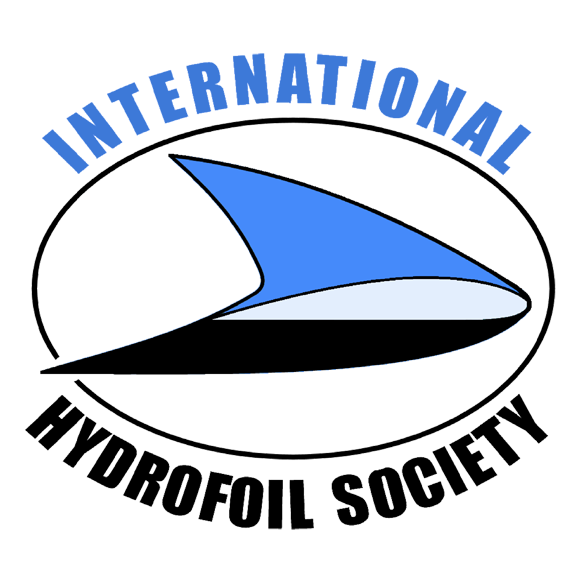International Hydrofoil Society Presents…
Last Update November 10, 2005
-
For Hydrofoil References in Popular Magazines and Books, Click Here
-
For Information on the IHS Advanced Marine Vehicle CD-ROM, Click Here
-
For More Bibliographies, Especially Sailing Related, Try the IHS Links Page)
-
For FAQs, Posted Messages, and Discussion About Hydrofoil Design Texts, Software, and Sources, Click Here
-
The Premier Sources For Descriptions and Principal Characteristics of Specific Military and Commercial Hydrofoils is Jane’s High Speed Marine Craft (formerly: Surface Skimmers, Hovercraft, and Hydrofoils) and Fast Ferry International
-
Of course every IHS Newsletter is packed with articles about hydrofoils. To view an index of past articles in MS Excel format, Click Here
Note: Recently added items are at the bottom of the list!
- Glossary of Hydrofoil Terminology (9 May 03)
- Hydrofoil Basics – A Brief Tutorial (11 Nov 00)
- Hydrofoil Ship Design – by William C. O’Neill, editing by William Ellsworth (20 Dec 04) This Hydrofoil Design paper by two of the worlds most senior and experienced Hydrofoil experts, concentrates on sizing and design of a foil system including mechanical subsystems to meet certain specified requirements. It also discusses a simple way of designing the first version of the control system algorithm, which was very successful on the Foilcat.
- Development of Dinghy Foilers – by Ian Ward (10 Oct 04)
- Ships That Fly, by Meyers, John. About 10 years ago John collected a lot of material about hydrofoils and put it all together in a book called Ships That Fly. It became a story of the modern hydrofoil covering the early days of hydrofoil inventors and experimenters and taking the reader through over 150 pictures and illustrations of hydrofoils leading to those of recent years. He recently had the pages of the book scanned and put in a pdf file and placed on a CD that is being offered for sale.You will note that Chapter 6, The US Navy Fleet Hydrofoil-PHM, ends with a very optimistic view of PHMs in the current US Navy, and larger hydrofoils in its future. However, this was not to be. Several years following the completion of my book, Ships That Fly, there were events surrounding the US Navy PHM program that are described in an Addendum to Chapter 6. All six PHM ships were decommissioned on July 30, 1993. This was the only time the US Navy has decommissioned an entire class of ships on the same day. This addendum describes some of the events leading to this sad day for the US Navy and the hydrofoil community. Also, documented are the many attempts to save the Ship, the day of the ceremony, attempts to save the ships even after the decommissioning, and finally the subsequent disposal of the ships and their status today.
John also collected a series of over 140 hydrofoil pictures and illustrations, and created a Hydrofoil Slide Show, entitled: A Century of Hydrofoil Development.
All three of these files are on the CD. To find out more, log onto: http://themeyers.org/ShipsThatFly/index.html
Best regards, John Meyer jr8meyer@comcast.net
 Quest for Speed at Sea – by Dennis J. Clark,William M. Ellsworth, and John R. Meyer from Naval Surface Warfare Center Technical Digest of April 2004. This new paper by senior IHS members, highlights the past, present, and future of the quest for speed at sea. It outlines the development of technologies and concepts to increase the speed of naval vehicles. Although commercial applications of high-speed marine craft flourish, the focus here is on high speed in naval missions. A historical context details significant attempts to increase ship speed, highlighting Carderock Division’s many contributions. The primary focus is after World War II, when the U.S. Navy began to seriously consider the value of proposed concepts for planing craft, multihulls, hydrofoils, hovercraft, and hybrids. A discussion of current high-speed ship technologies follows, with an overview of limits and advantages, plus a review of operational experience. Costs of development, acquisition, and operations are weighed, followed by a summary of high-speed naval vehicles’ potential. (15 Nov 04)
Quest for Speed at Sea – by Dennis J. Clark,William M. Ellsworth, and John R. Meyer from Naval Surface Warfare Center Technical Digest of April 2004. This new paper by senior IHS members, highlights the past, present, and future of the quest for speed at sea. It outlines the development of technologies and concepts to increase the speed of naval vehicles. Although commercial applications of high-speed marine craft flourish, the focus here is on high speed in naval missions. A historical context details significant attempts to increase ship speed, highlighting Carderock Division’s many contributions. The primary focus is after World War II, when the U.S. Navy began to seriously consider the value of proposed concepts for planing craft, multihulls, hydrofoils, hovercraft, and hybrids. A discussion of current high-speed ship technologies follows, with an overview of limits and advantages, plus a review of operational experience. Costs of development, acquisition, and operations are weighed, followed by a summary of high-speed naval vehicles’ potential. (15 Nov 04)- Design Paper on “A Configuration of a Stepped Planing Boat Having Minimum Drag (Dynaplane Boat)” by Eugene P. Clement. This is an excellent historic design paper on stepped hull hydroplanes with lots of solid design data. (11 Nov 05)
This Page Prepared and Maintained By…
IHS is not a source for copies of the articles cited above except where otherwise noted. If any library would like to start a special collection of hydrofoil reference material, IHS would like to hear from you… it is possible that we could assist in starting and building your collection.
Click Here To Suggest Additional Educational Reference(s)Go To Main Page


